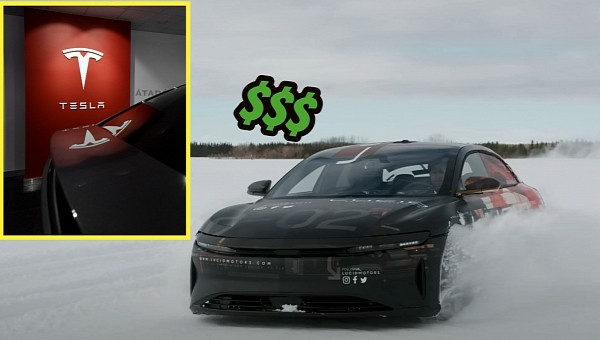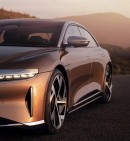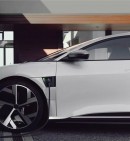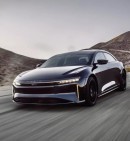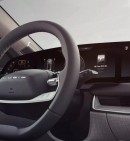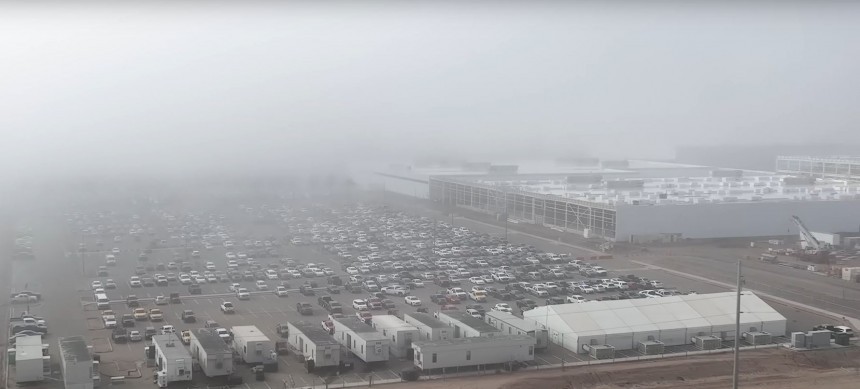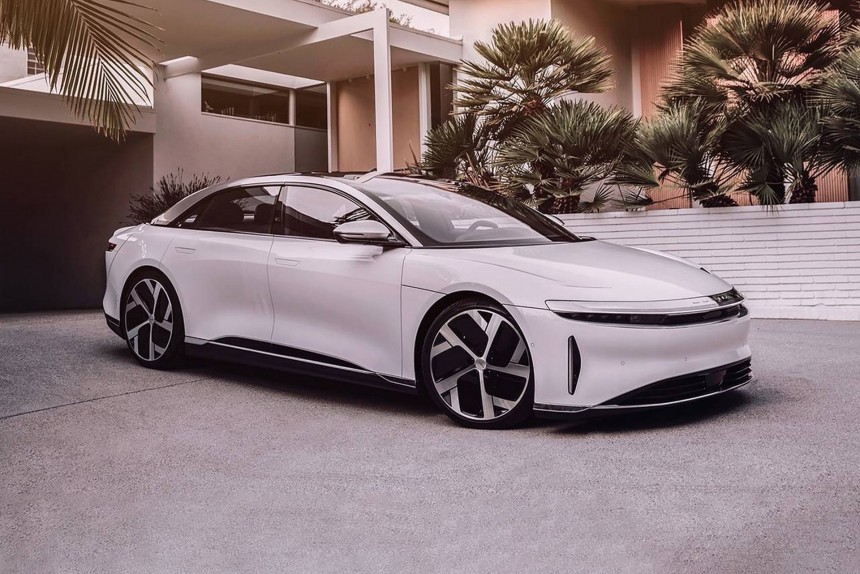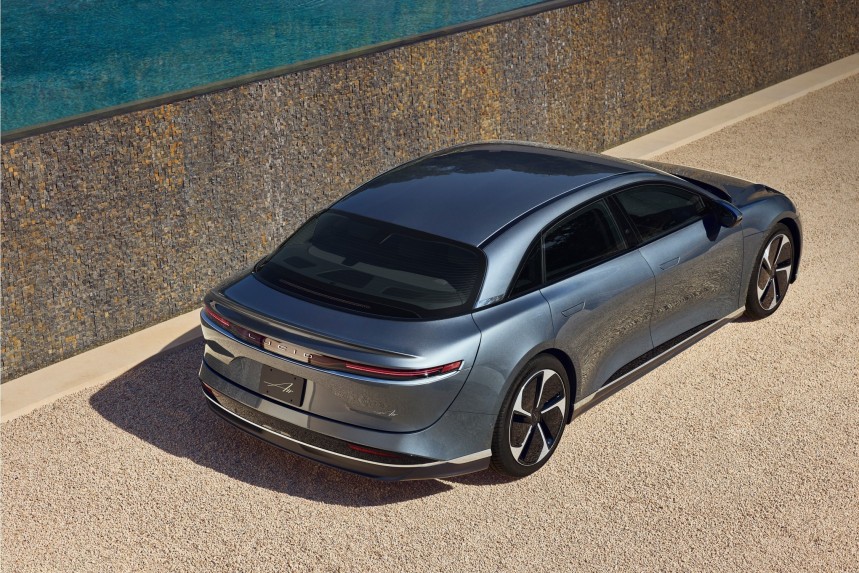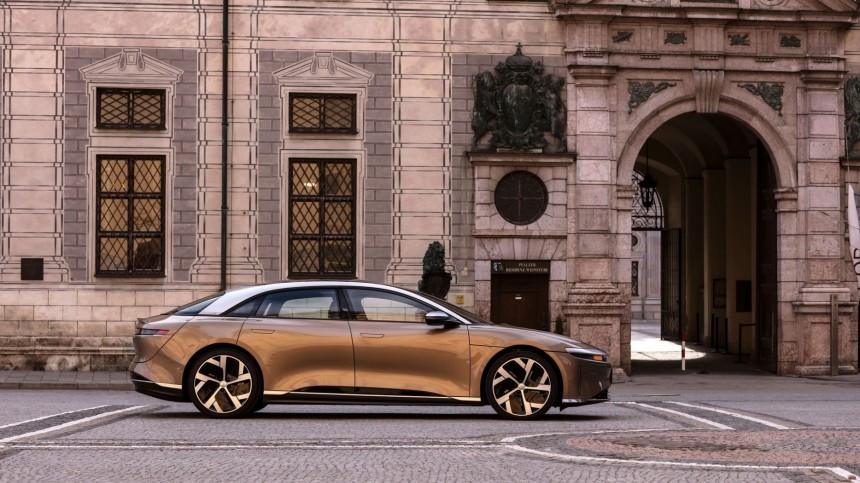In the automotive industry, nothing has truly changed if we are to look at its core. No matter what they are making, competitors are still fighting tooth and nail to either manufacture fewer vehicles that are more expensive or more cars that are less costly. For electric vehicle (EV) manufacturers, keeping this status-quo ongoing means Charles Darwin’s theory about the survival of the fittest is continuing to prevail. That’s bad news for Lucid and Tesla.
By now, most people are inclined to believe that EVs are the future. As bland as it may sound and as overused as this statement is, it describes perfectly what the automotive industry is going through. Every known brand is trying its best to find some market share in this artificially accelerated zero-tailpipe emission dream that can turn mainstream soon.
Despite putting major carmakers like Mazda, Toyota, Stellantis, or Renault on the spot for not having everything they need to start seriously challenging Tesla and their peers who are moving faster in the EV domain, elected officials and regulators are not wrong in their pursuit to make fossil fuel-powered vehicles a thing of the past. Both the U.S. and the EU have put out data constantly in the past couple of years that shows our world is heating up at an unreasonable pace.
Who is at fault? Well, mainly road transport emissions, which are right behind the energy industry when it comes to putting greenhouse gasses into our atmosphere. We’d argue that flying and private jet use are also absurdly bad for the environment. But it’s a hot discussion topic politicians don’t want to touch. So, today’s babies might grow up to discover a world in which the sound of cross-plane V8 will be available only at nostalgic gearhead events.
After Tesla proved EVs can work and harnessed all the potential of the first mover advantage, the industry slowly started moving in that direction too. Nissan, with its Leaf, wasn’t able to keep up, and Toyota refused to transform its self-charging hybrids into pure EVs. So, the American company was left alone to do its thing.
So, it’s no wonder that new names joined the automotive industry and are now almost thriving, even though it was considered a very conservative sector of the economy before Tesla spotted the elephant in the room and started playing with it.
Just as the first Tesla Roadsters were getting ready to be shipped away to their customers, Atieva was founded. This company was renamed Lucid when Peter Rawlinson, the Chief Engineer of the Model S, joined it. He accelerated the development of the young entity’s first vehicle which today is known as the luxurious zero-tailpipe emission Air.
The team’s work impressed some curious people in the Middle East and Saudi Arabia’s Public Investment Fund (PIF) decided to jump in and gave the Newark-based hopeful automaker $1 billion and an order for 100,000 EVs.
But as Lucid began showing off the prototype, Tesla was taking over the world. Fast forward to the first Air delivery in 2021, and a look at Tesla reveals that it delivered over 935,000 vehicles – a growth of 82.5% over 2020. Last year, the deliveries grew to around 1.31 million. In the context of supply chain issues, geopolitical challenges, and parts shortage, this was an amazing feat.
The creator of the S, 3, X, and Y models now has engineering centers, testing facilities, state-of-the-art painting shops, a massive (and reliable!) charging network, and manufacturing sites in the U.S., Europe, and Asia, while closely working with partners that have proven themselves to be reliable (for now). It sounds impressive because it is, but it’s also necessary because the brand is currently the world’s most valuable automaker and keeps presenting a lot of interest to institutional and retail investors.
However, amidst all this uncertainty one thing remains clear – Lucid’s Air is arguably a good product. It offers impressive performance, the build quality is good which indicates quality control is taken seriously, the cabin materials are reflecting the vehicle’s steep pricing, and the looks plus the aura of exclusivity are giving this stylish sedan a much-needed boost in the eyes of prospective buyers.
Besides this, Lucid made some impressive technological advancements in the powertrain department and the rumor that it’s going to be bought out entirely by the PIF is only attracting more interest. It’s worth remembering that the new drive unit it created weighs around 70 lb (32 kg) and puts out 469 hp (476 ps/350 kW).
Sadly, Lucid is still far away from reaching any kind of real market success because last year it made just 7,180 units and delivered 4,369 of them. That’s peanuts compared to what Tesla has been up to. Its Freemont plant alone sends out around 50,000 each month if we are to believe what the automaker says. But Tesla has four vehicles in production, while Lucid is basing its existence on only one sedan which comes in five variants – Pure RWD, Pure, Touring, Grand Touring, and Sapphire. But the cheapest Air has an MSRP of $87,400.
This number means the Air doesn’t get to enjoy the perks offered by the renewed EV tax credit and it also puts it into somewhat of a difficult spot. New car buyers are increasingly interested in crossovers, SUVs, and pickup trucks. The brand’s Project Gravity which was supposed to spurt out a fast, good-looking, and lavish SUV is still nowhere to completion. Other brands like Rivian, which sells the three-row all-wheel-drive R1S with its 316 miles (509 kilometers) of range for $84,000 are poised to capture a good part of the market that’s looking for a spacious EV that’s not a sedan.
Now, the Saudi-owned company is also delaying deliveries because it introduced the Stealth Look, which blacks out all the shiny bits and gives the Air a more subtle, meaner look. Its partners are not up to the job, and this affects the company’s ability to move on with putting more people behind the steering wheel of an Air.
Besides that, it appears that consumers are now spending their tax returns on newer, more affordable cars which increases demand temporarily. But what happens when the money stops flowing, or people are not paying their auto loans? Well, American Car Center already showed us – it stopped doing business a couple of days ago out of the blue.
It's the wrong approach in a slowing economy because there are a lot more people out there who need affordable EVs than the ones who want to go fast and not make any noise.
All this is reflected in Lucid’s manufacturing plans for 2023. It intends to make a maximum of 14,000 units this year, even though its factory can put out around 34,000 vehicles. So, it’s clear that the company anticipates a drop in demand alongside the parts sourcing problems. Running at below 50% capacity is not going to bring in any profits whatsoever.
And this is why Tesla should be a tad bit worried. Just like Intel lost its chip market domination to TSMC and Samsung, the EV maker risks losing customers to other big industry names who are not wasting any time. Chinese manufacturers who enjoy having the largest battery manufacturing plants near them are samplingm putting the creator of the Model X into a corner. BYD and Zeekr report astronomical year-over-year improvements in the sales department, while key European automakers are getting ready to flood the markets with their own EVs.
Factor in the drop in demand that will come with a slowing economy, the FSD Beta software shenanigans, the inexistent robotaxis, the absent $25,000 model, the CEO's constant clashes with the powers that be, the Semi secrecy, the Cybertruck delays, the Roadster II missing, the build quality issues reported by customers, and the ongoing fight over who secures minerals needed in EV batteries faster, and you might get a recipe for disaster.
For now, however, all investors and prospective customers can do is wait it out. Otherwise, they might risk jumping into the same boat as the people who overpaid for Tesla’s vehicles in 2022.
Despite putting major carmakers like Mazda, Toyota, Stellantis, or Renault on the spot for not having everything they need to start seriously challenging Tesla and their peers who are moving faster in the EV domain, elected officials and regulators are not wrong in their pursuit to make fossil fuel-powered vehicles a thing of the past. Both the U.S. and the EU have put out data constantly in the past couple of years that shows our world is heating up at an unreasonable pace.
Who is at fault? Well, mainly road transport emissions, which are right behind the energy industry when it comes to putting greenhouse gasses into our atmosphere. We’d argue that flying and private jet use are also absurdly bad for the environment. But it’s a hot discussion topic politicians don’t want to touch. So, today’s babies might grow up to discover a world in which the sound of cross-plane V8 will be available only at nostalgic gearhead events.
Laying down the groundwork
Now, automakers, chipmakers, battery manufacturers, and charging solutions providers are all seriously incentivized through various federal fiscal advantages to either improve their existing products or put brand-new ones on the market. The U.S. truly wants battery-electric vehicles and everything associated with them to become mainstream and lawmakers are giving the industry enough reasons to push forward with nifty programs like the National Electric Vehicle Infrastructure (NEVI) or the updated EV tax credit.So, it’s no wonder that new names joined the automotive industry and are now almost thriving, even though it was considered a very conservative sector of the economy before Tesla spotted the elephant in the room and started playing with it.
Just as the first Tesla Roadsters were getting ready to be shipped away to their customers, Atieva was founded. This company was renamed Lucid when Peter Rawlinson, the Chief Engineer of the Model S, joined it. He accelerated the development of the young entity’s first vehicle which today is known as the luxurious zero-tailpipe emission Air.
The team’s work impressed some curious people in the Middle East and Saudi Arabia’s Public Investment Fund (PIF) decided to jump in and gave the Newark-based hopeful automaker $1 billion and an order for 100,000 EVs.
The creator of the S, 3, X, and Y models now has engineering centers, testing facilities, state-of-the-art painting shops, a massive (and reliable!) charging network, and manufacturing sites in the U.S., Europe, and Asia, while closely working with partners that have proven themselves to be reliable (for now). It sounds impressive because it is, but it’s also necessary because the brand is currently the world’s most valuable automaker and keeps presenting a lot of interest to institutional and retail investors.
It's not all rosy
But things are not looking very good for EV makers like Tesla right now. Companies across multiple industries are still dealing with some supply chain problems and the geopolitical balance is practically hanging by a thread. Moreover, nations around the world are trying to fight inflation while prices somehow continue to rise even though money is a lot more expensive nowadays. The Federal Reserve (the Fed) also looks like it’s not going to stop raising the interest rate, which might lead to more job cuts, and fewer investments being made because debt risks becoming too unattractive for existing or hopeful entrepreneurs.However, amidst all this uncertainty one thing remains clear – Lucid’s Air is arguably a good product. It offers impressive performance, the build quality is good which indicates quality control is taken seriously, the cabin materials are reflecting the vehicle’s steep pricing, and the looks plus the aura of exclusivity are giving this stylish sedan a much-needed boost in the eyes of prospective buyers.
Besides this, Lucid made some impressive technological advancements in the powertrain department and the rumor that it’s going to be bought out entirely by the PIF is only attracting more interest. It’s worth remembering that the new drive unit it created weighs around 70 lb (32 kg) and puts out 469 hp (476 ps/350 kW).
Sadly, Lucid is still far away from reaching any kind of real market success because last year it made just 7,180 units and delivered 4,369 of them. That’s peanuts compared to what Tesla has been up to. Its Freemont plant alone sends out around 50,000 each month if we are to believe what the automaker says. But Tesla has four vehicles in production, while Lucid is basing its existence on only one sedan which comes in five variants – Pure RWD, Pure, Touring, Grand Touring, and Sapphire. But the cheapest Air has an MSRP of $87,400.
Now, the Saudi-owned company is also delaying deliveries because it introduced the Stealth Look, which blacks out all the shiny bits and gives the Air a more subtle, meaner look. Its partners are not up to the job, and this affects the company’s ability to move on with putting more people behind the steering wheel of an Air.
Besides that, it appears that consumers are now spending their tax returns on newer, more affordable cars which increases demand temporarily. But what happens when the money stops flowing, or people are not paying their auto loans? Well, American Car Center already showed us – it stopped doing business a couple of days ago out of the blue.
There might be no light at the end of the tunnel
Despite anticipating all these things, Lucid still decided to fight Tesla’s Plaid units and released the Air Sapphire which costs an eye-watering $249,000. It doesn’t make a lot of sense because the interior isn’t changed much and other established brands like Mercedes-Benz or BMW offer luxurious sedans that boast better-rated interiors. Plus, Tesla’s 1,020-hp Model S Plaid is less than half the price of the 1,200-hp Air. Nobody needs that much power to commute, so this is a fight to provide buyers interested in vehicles that can serve as status symbols.It's the wrong approach in a slowing economy because there are a lot more people out there who need affordable EVs than the ones who want to go fast and not make any noise.
And this is why Tesla should be a tad bit worried. Just like Intel lost its chip market domination to TSMC and Samsung, the EV maker risks losing customers to other big industry names who are not wasting any time. Chinese manufacturers who enjoy having the largest battery manufacturing plants near them are samplingm putting the creator of the Model X into a corner. BYD and Zeekr report astronomical year-over-year improvements in the sales department, while key European automakers are getting ready to flood the markets with their own EVs.
Factor in the drop in demand that will come with a slowing economy, the FSD Beta software shenanigans, the inexistent robotaxis, the absent $25,000 model, the CEO's constant clashes with the powers that be, the Semi secrecy, the Cybertruck delays, the Roadster II missing, the build quality issues reported by customers, and the ongoing fight over who secures minerals needed in EV batteries faster, and you might get a recipe for disaster.
For now, however, all investors and prospective customers can do is wait it out. Otherwise, they might risk jumping into the same boat as the people who overpaid for Tesla’s vehicles in 2022.
